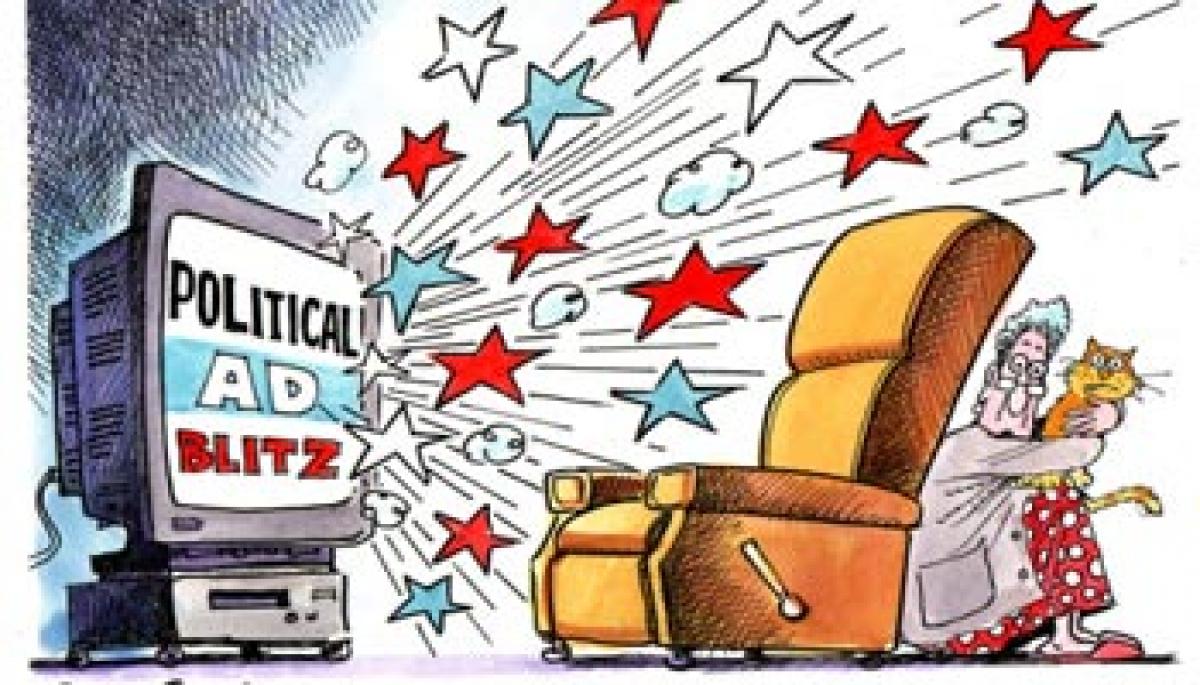Live
- Country’s progress depends on women empowerment: Bhatti
- Aryan Khan's Debut OTT Series Stardom Set to Feature Cameos from Shah Rukh Khan, Karan Johar & More
- Voting a precious privilege, all must exercise: Tata Sons Chairman
- Lionel Messi to play international friendly match in Kerala in 2025
- J'khand records 31.37 pc voter turnout, polling officer in Deoghar removed over 'bias'
- 116 slum dwellers get house allotment letters
- Sunita Williams Feasts on Shrimp Cocktails in Space, But Fresh Food is Major Struggle
- Maxwell likely to be out of action for a month due to hamstring tear
- Pramod Tiwari accuses BJP of electoral misconduct, says INDIA Bloc will win
- Bitcoin Hits Record High Above $94,000 Amid Trump’s Possible Acquisition of Bakkt
Just In

Front pages of newspapers seldom break news these days. Very often, the reader wakes up to a politician\'s beaming smile, not news. Want to listen to some music while driving? Switch the stereo on and it\'s quite likely you will have to make do with a political party\'s jingle.
New Delhi: Front pages of newspapers seldom break news these days. Very often, the reader wakes up to a politician's beaming smile, not news. Want to listen to some music while driving? Switch the stereo on and it's quite likely you will have to make do with a political party's jingle. And watching television before elections essentially means staring at competing visions of political parties, on an endless loop.
Gone are the days of bland government ads. Welcome to the age of sleek political advertising – creative and engaging. The recent CAG indictment of the AAP government for "violating" Supreme Court guidelines by conflating the party with the government in its ads or by promoting Arvind Kejriwal has put the spotlight on this rapidly evolving area.
But advertising professionals and public policy analysts believe the issue has layers and cannot be treated in black and white. "If you are a party in government, lines get blurred between the communications being put out by the government and the party. It is very easy to point fingers that the government has used public funds to take credit for the party, whereas the intention is of spreading awareness among citizens about government projects. Citizens will decide too if it's not what they wanted eventually," says Dilip Cherian, a top communications consultant and political campaign advisor.
Nitin Pai, who spearheads the Bengaluru-based Takshashila Institution, an independent think-tank, thinks it would be unfair to single out the AAP for doing "what all parties do." "Once they get into government, they use government resources and machinery to promote themselves and their leaders. It only shows that AAP is no different than the others in terms of its fiscal rectitude," he says.
Contemporary politics is all about larger-than-life individuals, who loom large over the landscape of the nation, as messiahs or saviours, often relegating pertinent issues to the back burner. Does it also reflect in political advertising? Analysts believe it does. Ad campaigns, even the political ones, are driven by a "protagonist or a brand ambassador." "In India today, every political party seems to be thriving on personality-driven advertising and communication," Cherian says.
While photographs of political leaders are "unnecessary" when the government announces new projects and schemes, Pai says, it is also obvious that a rule that "bans" such photographs is too broad and indiscriminate. "I do not think more rules are a solution, if our top political leaders lack a sense of decorum and propriety," he says.
In 2015, the Supreme Court had barred the use of photographs of politicians in ads except that of the Prime Minister. The President and the Chief Justice of India were also exempt. It had later modified the order and allowed the pictures of Union Ministers, Chief Ministers, Governors and State Ministers in government advertisements.
But can newspaper ads or radio jingles actually sway or shape public opinion and if yes to what extent? Cherian says ads and jingles are meant to create awareness and thereafter, it is up to the consumer or the public to decide whether to "buy" what is being communicated. "Unlike fast-moving consumer goods (FMCG) products, where large volumes of advertisements are meant to promote sales, a social or government advertising is primarily meant to disseminate information. If it persuades it's great advertising. If it does not then money is wasted," he says.
Pai believes that it depends on what is being conveyed, who is persuading and under what circumstances. "No amount of newspaper advertisements or radio jingles will create Swachch Bharat, at least in the short term. But an advertisement or radio spot promoting free vaccination by a certain due date is likely to change behaviour," he says.

© 2024 Hyderabad Media House Limited/The Hans India. All rights reserved. Powered by hocalwire.com







